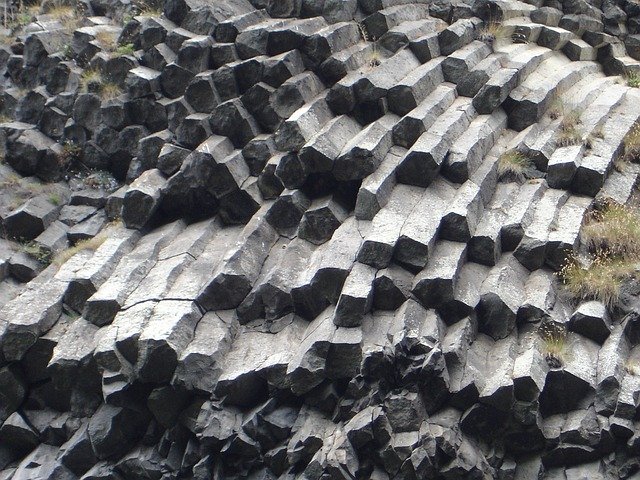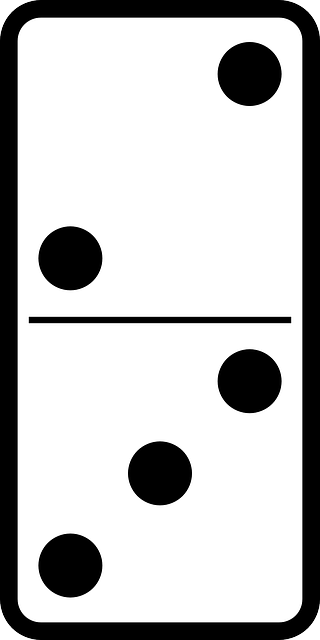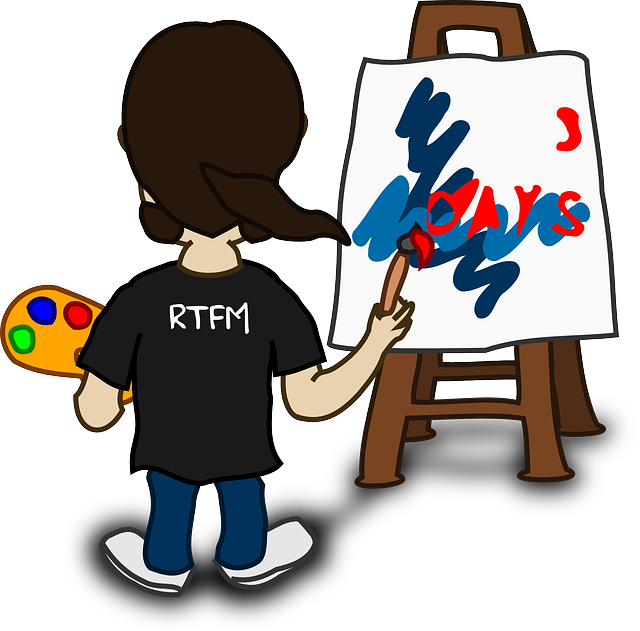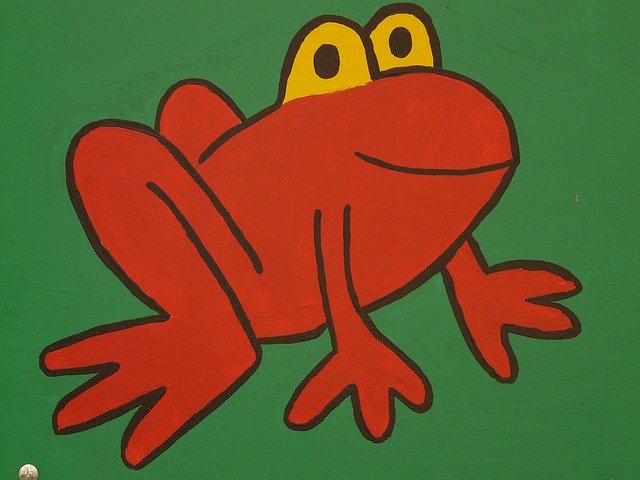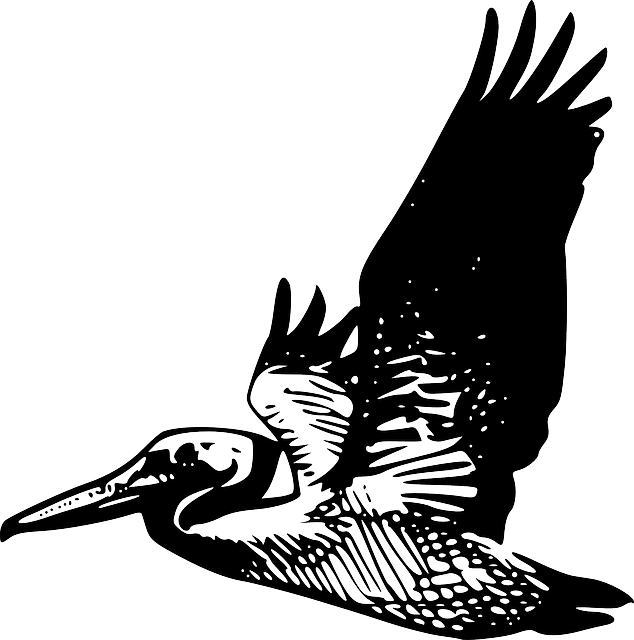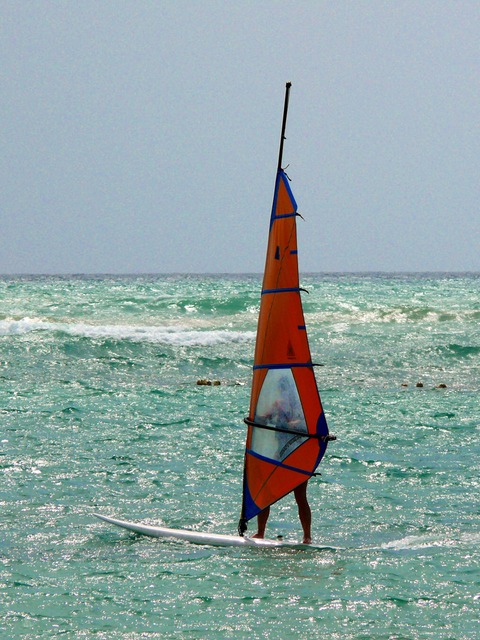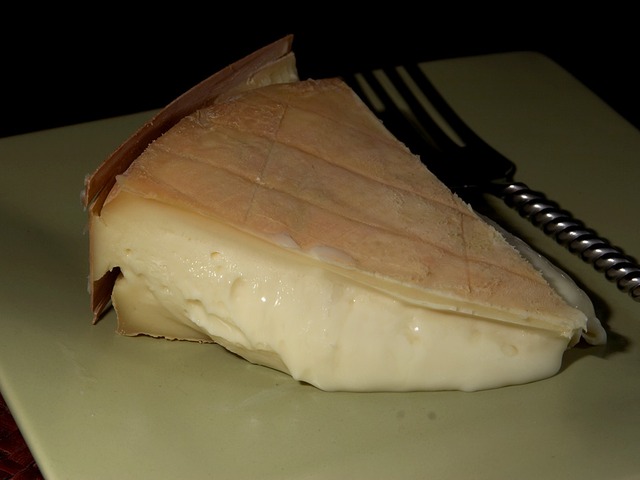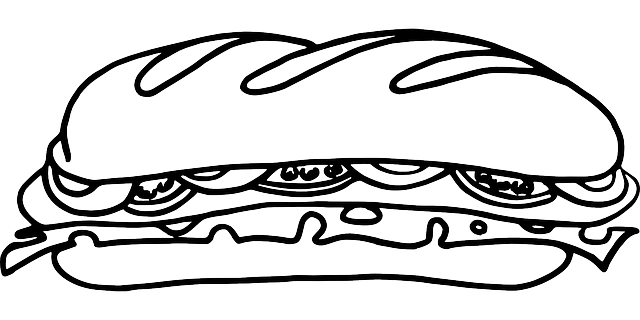نباتات عتيقة
| نباتات عتيقة Temporal range: Calymmian - Present, 1600–0Ma Had'n
Archean
Proterozoic
Pha.
| |
|---|---|
| Trees, grasses and algae in and around Sprague River, Oregon | |
| التصنيف الفهمي | |
| (unranked): | النواتح |
| (unranked): |
نباتات_عتيقة Adl et al., 2005 |
| Subgroups | |
| |
| Synonyms | |
| |
The Archaeplastida (or kingdom Plantae sensu lato) are a major group of eukaryotes, comprising the red algae (Rhodophyta), the green algae, and the land plants, together with a small group of freshwater unicellular algae called glaucophytes. The chloroplasts of all these organisms are surrounded by two membranes, suggesting they developed directly from endosymbiotic cyanobacteria. In all other groups besides the amoeboid Paulinella chromatophora, the chloroplasts are surrounded by three or four membranes, suggesting they were acquired secondarily from red or green algae.
The cells of the Archaeplastida typically lack centrioles and have mitochondria with flat cristae. They usually have a cell wall including cellulose, and food is stored in the form of starch. However, these characteristics are also shared with other eukaryotes. The main evidence that the Archaeplastida form a monophyletic group comes from genetic studies, which indicate their plastids probably had a single origin. This evidence is disputed. Based on the results to date, alternative evolutionary scenarios to a single primary endosymbiosis are not possible to confirm or refute. Photosynthetic organisms with plastids of different origin (such as brown algae) do not belong to the Archaeplastida.
The archaeplastidans fall into two main evolutionary lines. The red algae are pigmented with and phycobiliproteins, like most cyanobacteria, and accumulate starch outside the chloroplasts. The green algae and land plants – together known as Viridiplantae (Latin for "green plants") or Chloroplastida – are pigmented with chlorophylls a and b, but lack phycobiliproteins, and starch is accumulated inside the chloroplasts. The glaucophytes have typical cyanobacterial pigments, and are unusual in retaining a cell wall within their plastids (called cyanelles).
Archaeplastida should not be confused with the older and obsolete name Archiplastideae, which refers to cyanobacteria and other groups of bacteria.
Taxonomy
The consensus in 2005, when the group consisting of the glaucophytes and red and green algae and land plants was named 'Archaeplastida', was that it was a clade, i.e. was monophyletic. Many studies published since then have provided evidence in agreement. Other studies, though, have suggested that the group is paraphyletic. To date, the situation appears unresolved, but a strong signal for Plantae (Archaeplastida) monophyly has been demonstrated in a recent study (with an enrichment of red algal genes). The assumption made here is that Archaeplastida is a valid clade.
Various names have been given to the group. Some authors have simply referred to the group as plants or Plantae. However, the name Plantae is ambiguous, since it has also been applied to less inclusive clades, such as Viridiplantae and embryophytes. To distinguish, the larger group is sometimes known as Plantae sensu lato ("plants in the broad sense").
To avoid ambiguity, other names have been proposed. Primoplantae, which appeared in 2004, seems to be the first new name suggested for this group.
Another name applied to this node is Plastida, defined as the clade sharing "plastids of primary (direct prokaryote) origin [as] in Magnolia virginiana Linnaeus 1753".
Although many studies have suggested the Archaeplastida form a monophyletic group, a 2009 paper argues that they are in fact paraphyletic. The enrichment of novel red algal genes in a recent study demonstrates a strong signal for Plantae (Archaeplastida) monophyly and an equally strong signal of gene sharing history between the red/green algae and other lineages. This study provides insight on how rich mesophilic red algal gene data are crucial for testing controversial issues in eukaryote evolution and for understanding the complex patterns of gene inheritance in protists.
The name Archaeplastida was proposed in 2005 by a large international group of authors (Adl et al.), who aimed to produce a classification for the eukaryotes which took into account morphology, biochemistry, and phylogenetics, and which had "some stability in the near term." They rejected the use of formal taxonomic ranks in favour of a hierarchical arrangement where the clade names do not signify rank. Thus, the phylum name 'Glaucophyta' and the class name 'Rhodophyceae' appear at the same level in their classification. The divisions proposed for the Archaeplastida are shown below in both tabular and diagrammatic form.
Archaeplastida:
- Glaucophyta Skuja, 1954 (Glaucocystophyta Kies & Kremer, 1986) – glaucophytes
- Glaucophytes are a small group of freshwater single-celled algae. Their chloroplasts, called cyanelles, have a peptidoglycan layer, making them more similar to cyanobacteria than those of the remaining Archaeplastida.
- Rhodophyceae Thuret, 1855, emend. Rabenhorst, 1863, emend. Adl et al., 2005 (Rhodophyta Wettstein 1901) – red algae
- Red algae form one of the largest groups of algae. Most are seaweeds, being multicellular and marine. Their red colour comes from phycobiliproteins, used as accessory pigments in light capture for photosynthesis.
- Chloroplastida Adl et al., 2005 (Viridiplantae Cavalier-Smith 1981; Chlorobionta Jeffrey 1982, emend. Bremer 1985, emend. Lewis and McCourt 2004; Chlorobiota Kendrick and Crane 1997)
- Chloroplastida is the term chosen by Adl et al. for the group made up of the green algae and land plants (embryophytes). Except where lost secondarily, all have chloroplasts without a peptidoglycan layer and lack phycobiliproteins.
- Chlorophyta Pascher, 1914, emend. Lewis & McCourt, 2004 – green algae (part)
-
- Adl et al. employ a narrow definition of the Chlorophyta; other sources include the Chlorodendrales and Prasinophytae, which may themselves be combined.
- Ulvophyceae Mattox & Stewart, 1984
- Trebouxiophyceae Friedl, 1995 (Pleurastrophyceae Mattox et al. 1984; Microthamniales Melkonian 1990)
- Chlorophyceae Christensen, 1994
- Chlorodendrales Fritsch, 1917 – green algae (part)
- Prasinophytae Cavalier-Smith, 1998, emend. Lewis & McCourt, 2004 – green algae (part)
- Mesostigma Lauterborn, 1894, emend. McCourt in Adl et al., 2005 (Mesostigmata Turmel, Otis, and Lemieux 2002)
- Charophyta Karol et al., 2001, emend. Lewis & McCourt, 2004 (Charophyceae Smith 1938, emend. Mattox and Stewart 1984) – green algae (part) and land plants
-
- Charophyta sensu lato, as used by Adl et al., is a monophyletic group which is made up of some green algae, including the stoneworts (Charophyta sensu stricto), as well as the land plants (embryophytes).
- Sub-divisions other than Streptophytina (below) were not given by Adl et al.
- Other sources would include the green algal groups Chlorokybales, Klebsormidiales, Zygnematales and Coleochaetales.
- Streptophytina Lewis & McCourt, 2004 – stoneworts and land plants
- Charales Lindley 1836 (Charophytae Engler, 1887) – stoneworts
- Plantae Haeckel 1866 (Cormophyta Endlicher, 1836; Embryophyta Endlicher, 1836, emend. Lewis & McCourt, 2004) – land plants (embryophytes)
Cladogram
Below is a consensus reconstruction of green algal relationships, mainly based on molecular data. While the Glaucophyta are typically figured as deepest rooting Archeaplastida, some genomic research points to Rhodophyta as basal, possibly with Cryptista and picozoa emerging in Archaeplastida.
| Diaphoretickes |
|
||||||||||||||||||||||||||||||||||||||||||||||||||||||||||||||||||||||||||||||||||||||||||||||||||||||||||||
However, there is a lot of contention near the Archaeplastida root, e.g. whether Glaucophyta or Rhodophyta are basal, or whether e.g. Cryptista emerged within the Archaeplastida. In 2014 a thorough review was published on these inconsistencies. The position of Telonemia and Picozoa are not clear. Also Hacrobia may be associated with the SAR clade. The SAR are often seen as eukaryote-eukaryote hybrids, contributing to the confusion in the genetic analyses.
Morphology
All archaeplastidans have plastids (chloroplasts) that carry out photosynthesis and are believed to be derived from captured cyanobacteria. In glaucophytes, perhaps the most primitive members of the group, the chloroplast is called a cyanelle and shares several features with cyanobacteria, including a peptidoglycan cell wall, that are not retained in other members of the group. The resemblance of cyanelles to cyanobacteria supports the endosymbiotic theory.
The cells of most archaeplastidans have walls, commonly but not always made of cellulose.
The Archaeplastida vary widely in the degree of their cell organization, from isolated cells to filaments to colonies to multi-celled organisms. The earliest were unicellular, and many groups remain so today. Multicellularity evolved separately in several groups, including red algae, ulvophyte green algae, and in the green algae that gave rise to stoneworts and land plants.
Endosymbiosis
Because the ancestral archaeplastidan is hypothesized to have acquired its chloroplasts directly by engulfing cyanobacteria, the event is known as a primary endosymbiosis (as reflected in the name chosen for the group 'Archaeplastida' i.e. 'ancient plastid'). Evidence for primary endosymbosis includes the presence of a double membrane around the chloroplasts; one membrane belonged to the bacterium, and the other to the eukaryote that captured it. Over time, many genes from the chloroplast have been transferred to the nucleus of the host cell. The presence of such genes in the nuclei of eukaryotes without chloroplasts suggests this transfer happened early in the evolution of the group.
Other eukaryotes with chloroplasts appear to have gained them by engulfing a single-celled archaeplastidan with its own bacterially-derived chloroplasts. Because these events involve endosymbiosis of cells that have their own endosymbionts, the process is called secondary endosymbiosis. The chloroplasts of such eukaryotes are typically surrounded by more than two membranes, reflecting a history of multiple engulfment. The chloroplasts of euglenids and chlorarachniophytes appear to be captured green algae, whereas those of other photosynthetic eukaryotes, such as heterokont algae, cryptophytes, haptophytes, and dinoflagellates, appear to be captured red algae.
Fossil record
Perhaps the most ancient remains of Archaeplastida are putative red algae (Rafatazmia) within stromatolites in 1600 Ma (million years ago) rocks in India. Somewhat more recent are microfossils from the Roper group in northern Australia. The structure of these single-celled fossils resembles that of modern green algae. They date to the Mesoproterozoic Era, about 1500 to 1300 Ma. These fossils are consistent with a molecular clock study that calculated that this clade diverged about 1500 Ma. The oldest fossil that can be assigned to a specific modern group is the red alga Bangiomorpha, from 1200 Ma.
In the late Neoproterozoic Era, algal fossils became more numerous and diverse. Eventually, in the Paleozoic Era, plants emerged onto land, and have continued to flourish up to the present.
References
- ^ Adl, S.M.; et al. (2005). "The New Higher Level Classification of Eukaryotes with Emphasis on the Taxonomy of Protists". Journal of Eukaryotic Microbiology. 52 (5): 399–451. doi:10.1111/j.1550-7408.2005.00053.x. PMID 16248873.
- ^ Cavalier-Smith, T. (1981). "Eukaryote Kingdoms: Seven or Nine?"". BioSystems. 14 (3–4): 461–481. doi:10.1016/0303-2647(81)90050-2. PMID 7337818.
- ^ Palmer, Jeffrey D.; Soltis, Douglas E.; Chase, Mark W. (2004). "The plant tree of life: an overview and some points of view". American Journal of Botany. 91 (10): 1437–1445. doi:10.3732/ajb.91.10.1437. PMID 21652302.
- ^ Ball S, Colleoni C, Cenci U, Raj JN, Tirtiaux C (January 2011). "The evolution of glycogen and starch metabolism in eukaryotes gives molecular clues to understand the establishment of plastid endosymbiosis". Journal of Experimental Botany. 62 (6): 1775–1801. doi:10.1093/jxb/erq411. PMID 21220783.
- ^ Parfrey. L. W.; Barbero, E.; Lasser, E; et al. (December 2006). "Evaluating support for the current classification of eukaryotic diversity". PLoS Genetics. 2 (12): e220. doi:10.1371/journal.pgen.0020220. PMC 1713255. PMID 17194223.
- ^ Kim, E; Graham, L. E. (July 2008). Redfield, Rosemary Jeanne (ed.). "EEF2 analysis challenges the monophyly of Archaeplastida and Chromalveolata". PLoS ONE. 3 (7): e2621. Bibcode:2008PLoSO...3.2621K. doi:10.1371/journal.pone.0002621. PMC 2440802. PMID 18612431.
- ^ Mackiewicz, P.; Gagat, P. (2014). "Monophyly of Archaeplastida supergroup and relationships among its lineages in the light of phylogenetic and phylogenomic studies. Are we close to a consensus?". Acta Societatis Botanicorum Poloniae. 83 (4): 263–280. doi:10.5586/asbp.2014.044.
- ^ Viola, R.; Nyvall, P.; Pedersén, M (2001). "The unique features of starch metabolism in red algae". Proceedings of the Royal Society B: Biological Sciences. 268 (1474): 1417–1422. doi:10.1098/rspb.2001.1644. PMC 1088757. PMID 11429143.
- ^ Copeland, H. F. (1956). The Classification of Lower Organisms. Palo Alto: Pacific Books, p. 29, [1].
- ^ Bessey, C. E. (1907). "A Synopsis of Plant Phyla". Univ. Nebraska Studies. 7: 275–358.
- ^ Burki, Fabien; Kamran Shalchian-Tabrizi; Marianne Minge; Åsmund Skjæveland; Sergey I. Nikolaev; Kjetill S. Jakobsen; Jan Pawlowski (2007). Butler, Geraldine (ed.). "Phylogenomics Reshuffles the Eukaryotic Supergroups". PLoS ONE. 2 (8): e790. Bibcode:2007PLoSO...2..790B. doi:10.1371/journal.pone.0000790. PMC 1949142. PMID 17726520.
- ^ Burki, F.; Inagaki, Y.; Brate, J.; Archibald, J. M.; Keeling, P. J.; Cavalier-Smith, T.; et al. (2009). "Large-Scale Phylogenomic Analyses Reveal That Two Enigmatic Protist Lineages, Telonemia and Centroheliozoa, Are Related to Photosynthetic Chromalveolates". Genome Biology and Evolution. 1: 231–238. doi:10.1093/gbe/evp022. PMC 2817417. PMID 20333193.
- ^ Cavalier-Smith, Thomas (2009). "Kingdoms Protozoa and Chromista and the eozoan root of the eukaryotic tree". Biology Letters. 6 (3): 342–345. doi:10.1098/rsbl.2009.0948. PMC 2880060. PMID 20031978.
- ^ Rogozin, I. B.; Basu, M. K.; Csürös, M. & Koonin, E. V. (2009). "Analysis of Rare Genomic Changes Does Not Support the Unikont–Bikont Phylogeny and Suggests Cyanobacterial Symbiosis as the Point of Primary Radiation of Eukaryotes". Genome Biology and Evolution. 1: 99–113. doi:10.1093/gbe/evp011. PMC 2817406. PMID 20333181.
- ^ Nozaki, H.; Maruyama, S.; Matsuzaki, M.; Nakada, T.; Kato, S.; Misawa, K. (December 2009). "Phylogenetic positions of Glaucophyta, green plants (Archaeplastida) and Haptophyta (Chromalveolata) as deduced from slowly evolving nuclear genes". Molecular Phylogenetics and Evolution. 53 (3): 872–80. doi:10.1016/j.ympev.2009.08.015. PMID 19698794.
- ^ Chan, C. X.; Yang, E. C.; Banerjee, T.; Yoon, H. S.; Martone, P. T.; Estevez, J. M.; Bhattacharya, D. (2011). "Red and green algal monophyly and extensive gene sharing found in a rich repertoire of red algal genes". Current Biology. 21 (4): 328–333. doi:10.1016/j.cub.2011.01.037. PMID 21315598.
- ^ T. Cavalier-Smith (1981). "Eukaryote Kingdoms: Seven or Nine?". BioSystems. 14 (3–4): 461–481. doi:10.1016/0303-2647(81)90050-2. PMID 7337818.
- ^ Bhattacharya, Debashish; Yoon, Hwan Su; Hackett, Jeremiah (2003). "Photosynthetic eukaryotes unite: endosymbiosis connects the dots". BioEssays. 26 (1): 50–60. doi:10.1002/bies.10376. PMID 14696040.
- ^ Simpson, A. G. B. (2004). "Highest-level taxa within Eukaryotes". First International Phylogenetic Nomenclature Meeting. Paris, July 6–9.
- ^ Vinogradov S. N.; Fernández, I.; Hoogewijs, D.; Arredondo-Peter, R. (October 2010). "Phylogenetic Relationships of 3/3 and 2/2 Hemoglobins in Archaeplastida Genomes to Bacterial and Other Eukaryote Hemoglobins". Molecular Plant. 4 (1): 42–58. doi:10.1093/mp/ssq040. PMID 20952597.
- ^ Turmel, M.; Otis, C.; Lemieux, C. (2005). reveal that the chloroplast genome underwent extensive changes during the evolution of the Zygnematales". BMC Biology. 3: 22. doi:10.1186/1741-7007-3-22. PMC 1277820. PMID 16236178.
- ^ Leliaert, Frederik; Smith, David R.; Moreau, Hervé; Herron, Matthew D.; Verbruggen, Heroen; Delwiche, Charles F.; De Clerck, Olivier (2012). "Phylogeny and Molecular Evolution of the Green Algae" (PDF). Critical Reviews in Plant Sciences. 31: 1–46. doi:10.1080/07352689.2011.615705.
- ^ Marin, Birger (2012). "Nested in the Chlorellales or Independent Class? Phylogeny and Classification of the Pedinophyceae (Viridiplantae) Revealed by Molecular Phylogenetic Analyses of Complete Nuclear and Plastid-encoded rRNA Operons". Protist. 163 (5): 778–805. doi:10.1016/j.protis.2011.11.004. PMID 22192529.
- ^ Laurin-Lemay, Simon; Brinkmann, Henner; Philippe, Hervé (2012). "Origin of land plants revisited in the light of sequence contamination and missing data". Current Biology. 22 (15): R593–R594. doi:10.1016/j.cub.2012.06.013. PMID 22877776.
- ^ Leliaert, Frederik; Tronholm, Ana; Lemieux, Claude; Turmel, Monique; DePriest, Michael S.; Bhattacharya, Debashish; Karol, Kenneth G.; Fredericq, Suzanne; Zechman, Frederick W. (2016-05-09). "Chloroplast phylogenomic analyses reveal the deepest-branching lineage of the Chlorophyta, Palmophyllophyceae class. nov". Scientific Reports (in الإنجليزية). 6: 25367. Bibcode:2016NatSR...625367L. doi:10.1038/srep25367. ISSN 2045-2322. PMC 4860620. PMID 27157793.
- ^ Cook, Martha E.; Graham, Linda E. (2017). Archibald, John M.; Simpson, Alastair G. B.; Slamovits, Claudio H. (eds.). (in الإنجليزية). Springer International Publishing. pp. 185–204. doi:10.1007/978-3-319-28149-0_36. ISBN .
- ^ Lewis, Louise A.; Richard M. McCourt (2004). "Green algae and the origin of land plants" (abstract). American Journal of Botany. 91 (10): 1535–1556. doi:10.3732/ajb.91.10.1535. PMID 21652308.
- ^ Ruhfel, Brad R.; Gitzendanner, Matthew A.; Soltis, Pamela S.; Soltis, Douglas E.; Burleigh, J. Gordon (2014-02-17). "From algae to angiosperms–inferring the phylogeny of green plants (Viridiplantae) from 360 plastid genomes". BMC Evolutionary Biology. 14: 23. doi:10.1186/1471-2148-14-23. ISSN 1471-2148. PMC 3933183. PMID 24533922.
- ^ Adl, Sina M.; Simpson, Alastair G. B.; Lane, Christopher E.; Lukeš, Julius; Bass, David; Bowser, Samuel S.; Brown, Matthew W.; Burki, Fabien; Dunthorn, Micah (2012-09-01). "The Revised Classification of Eukaryotes". Journal of Eukaryotic Microbiology (in الإنجليزية). 59 (5): 429–514. doi:10.1111/j.1550-7408.2012.00644.x. ISSN 1550-7408. PMC 3483872. PMID 23020233.
- ^ Lemieux, Claude; Otis, Christian; Turmel, Monique (2007-01-12). "A clade uniting the green algae Mesostigma viride and Chlorokybus atmophyticus represents the deepest branch of the Streptophyta in chloroplast genome-based phylogenies". BMC Biology. 5: 2. doi:10.1186/1741-7007-5-2. ISSN 1741-7007. PMC 1781420. PMID 17222354.
- ^ Umen, James G. (2014-11-01). "Green Algae and the Origins of Multicellularity in the Plant Kingdom". Cold Spring Harbor Perspectives in Biology (in الإنجليزية). 6 (11): a016170. doi:10.1101/cshperspect.a016170. ISSN 1943-0264. PMC 4413236. PMID 25324214.
- ^ Vries, Jan de; Gould, Sven B. (2017-01-01). "The monoplastidic bottleneck in algae and plant evolution". J Cell Sci (in الإنجليزية): jcs.203414. doi:10.1242/jcs.203414. ISSN 0021-9533. PMID 28893840.
- ^ Ponce-Toledo, Rafael I.; Deschamps, Philippe; López-García, Purificación; Zivanovic, Yvan; Benzerara, Karim; Moreira, David (2017). "An Early-Branching Freshwater Cyanobacterium at the Origin of Plastids". Current Biology. 27 (3): 386–391. doi:10.1016/j.cub.2016.11.056. PMC 5650054. PMID 28132810.
- ^ Dittami, Simon M.; Heesch, Svenja; Olsen, Jeanine L.; Collén, Jonas (2017-08-01). "Transitions between marine and freshwater environments provide new clues about the origins of multicellular plants and algae". Journal of Phycology (in الإنجليزية). 53 (4): 731–745. doi:10.1111/jpy.12547. ISSN 1529-8817. PMID 28509401.
- ^ Smith, David R. . doi:10.1016/bs.abr.2017.10.001.
- ^ Burki, Fabien; Kaplan, Maia; Tikhonenkov, Denis V.; Zlatogursky, Vasily; Minh, Bui Quang; Radaykina, Liudmila V.; Smirnov, Alexey; Mylnikov, Alexander P.; Keeling, Patrick J. (2016-01-27). "Untangling the early diversification of eukaryotes: a phylogenomic study of the evolutionary origins of Centrohelida, Haptophyta and Cryptista". Proc. R. Soc. B (in الإنجليزية). 283 (1823): 20152802. doi:10.1098/rspb.2015.2802. ISSN 0962-8452. PMC 4795036. PMID 26817772.
- ^ Brown, Matthew W.; Heiss, Aaron; Kamikawa, Ryoma; Inagaki, Yuji; Yabuki, Akinori; Tice, Alexander K.; Shiratori, Takashi; Ishida, Ken; Hashimoto, Tetsuo (2017-12-03). "Phylogenomics places orphan protistan lineages in a novel eukaryotic super-group". BioRxiv (in الإنجليزية): 227884. doi:10.1101/227884.
- ^ Lee, JunMo; Cho, Chung Hyun; Park, Seung In; Choi, Ji Won; Song, Hyun Suk; West, John A.; Bhattacharya, Debashish; Yoon, Hwan Su (2016-09-02). "Parallel evolution of highly conserved plastid genome architecture in red seaweeds and seed plants". BMC Biology. 14: 75. doi:10.1186/s12915-016-0299-5. ISSN 1741-7007. PMC 5010701. PMID 27589960.
- ^ Bodył, Andrzej (2017-05-23). "Did some red alga-derived plastids evolve via kleptoplastidy? A hypothesis". Biological Reviews (in الإنجليزية). 93 (1): 201–222. doi:10.1111/brv.12340. ISSN 1464-7931.
- ^ Gitzendanner, Matthew A.; Soltis, Pamela S.; Wong, Gane K.-S.; Ruhfel, Brad R.; Soltis, Douglas E. (2018). "Plastid phylogenomic analysis of green plants: A billion years of evolutionary history". American Journal of Botany (in الإنجليزية). 105 (3): 291–301. doi:10.1002/ajb2.1048. ISSN 0002-9122.
- ^ Mackiewicz, Paweł; Gagat, Przemysław (2014-12-31). "Monophyly of Archaeplastida supergroup and relationships among its lineages in the light of phylogenetic and phylogenomic studies. Are we close to a consensus?". Acta Societatis Botanicorum Poloniae (in الإنجليزية). 83 (4): 263–280. doi:10.5586/asbp.2014.044. ISSN 2083-9480.
- ^ Andersson, Jan O.; Roger, Andrew J. (2002). "A cyanobacterial gene in non-photosynthetic protists – an early chloroplast acquisition in eukaryotes?". Current Biology. 12 (2): 115–119. doi:10.1016/S0960-9822(01)00649-2. PMID 11818061.
- ^ Bengtson, Stefan; Sallstedt, Therese; Belivanova, Veneta; Whitehouse, Martin (2017). "Three-dimensional preservation of cellular and subcellular structures suggests 1.6 billion-year-old crown-group red algae". PLOS Biology. 15 (3): e2000735. doi:10.1371/journal.pbio.2000735. PMID 28291791.
- ^ Javaux, Emmanuelle J.; Knoll, Andrew H.; Walter, Malcolm R. (2004). "TEM evidence for eukaryotic diversity in mid-Proterozoic oceans". Geobiology. 2 (3): 121–132. doi:10.1111/j.1472-4677.2004.00027.x.
- ^ Yoon, Hwan Su; Hackett, Jeremiah D.; Ciniglia, Claudia; Pinto, Gabriele; Bhattacharya, Debashish (2004). "A molecular timeline for the origin of photosynthetic eukaryotes". Molecular Biology and Evolution. 21 (5): 809–818. doi:10.1093/molbev/msh075. PMID 14963099.
- ^ Butterfield, Nicholas J. (2000). "Bangiomorpha pubescens n. gen., n. sp.: implications for the evolution of sex, multicellularity, and the Mesoproterozoic/Neoproterozoic radiation of eukaryotes". Paleobiology. 26 (3): 386–404. doi:10.1666/0094-8373(2000)026<0386:BPNGNS>2.0.CO;2.
وصلات خارجية
- Tree of Life Eukaryotes
خطأ لوا في وحدة:Taxonbar على السطر 140: attempt to index field 'wikibase' (a nil value).



